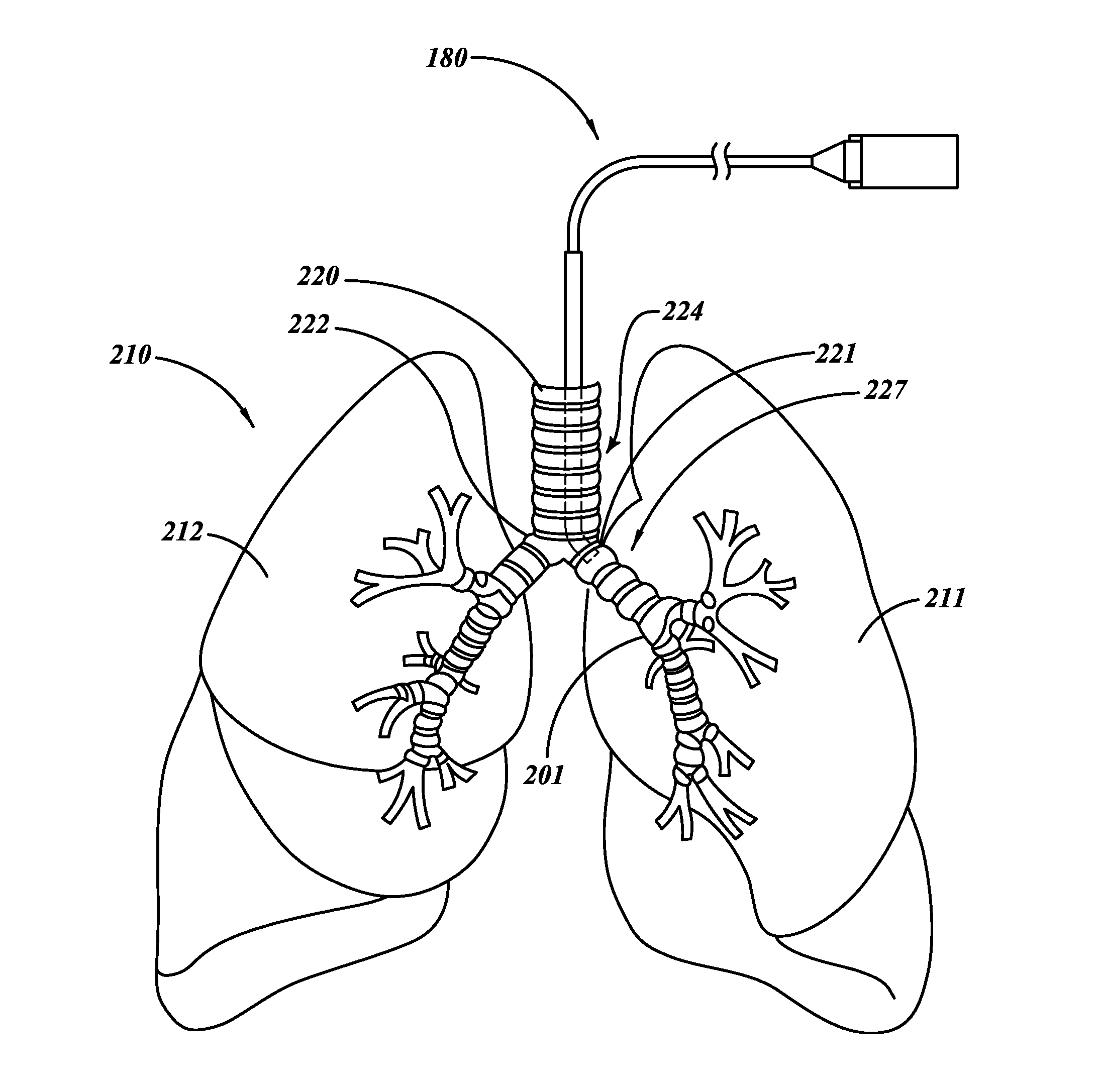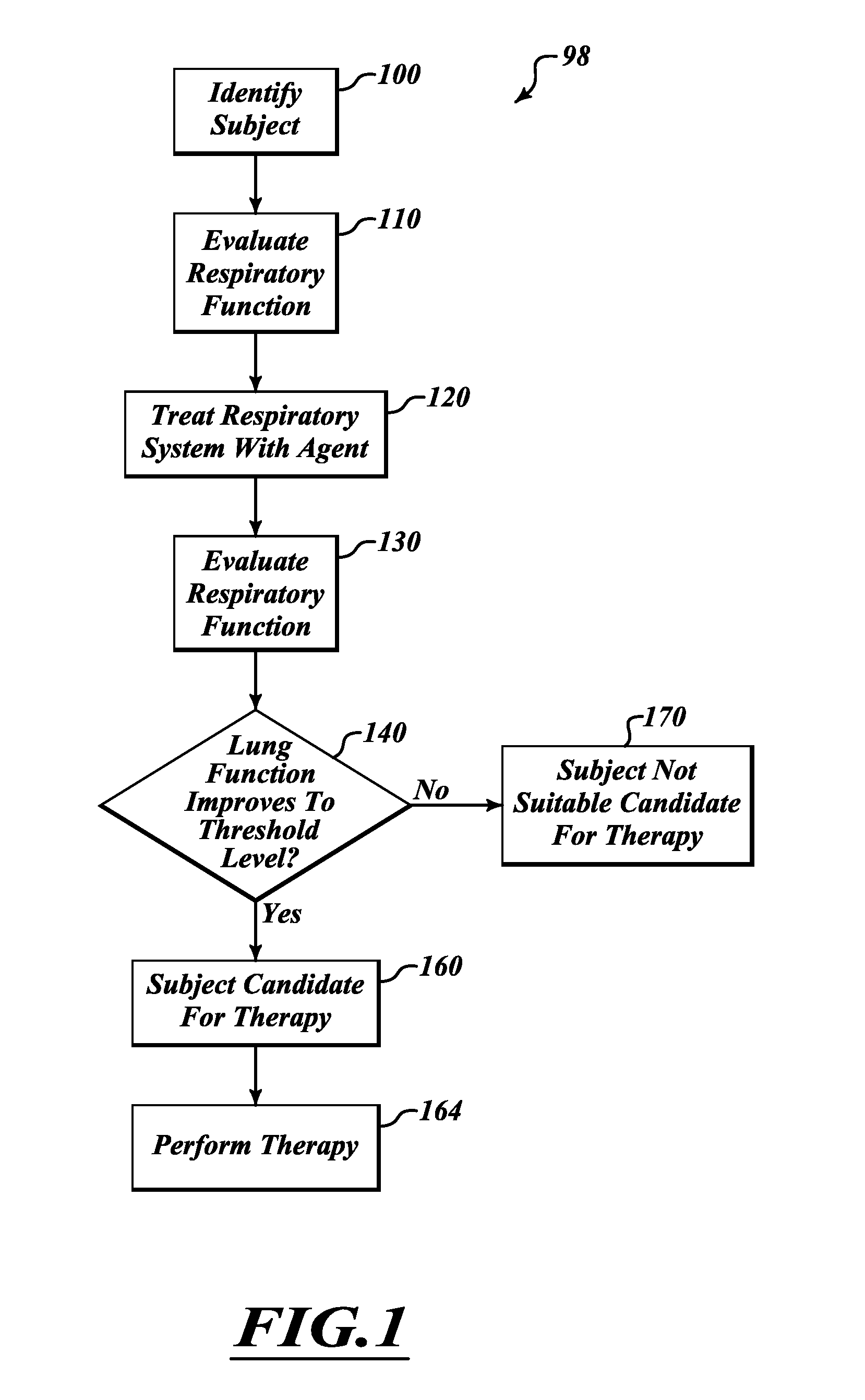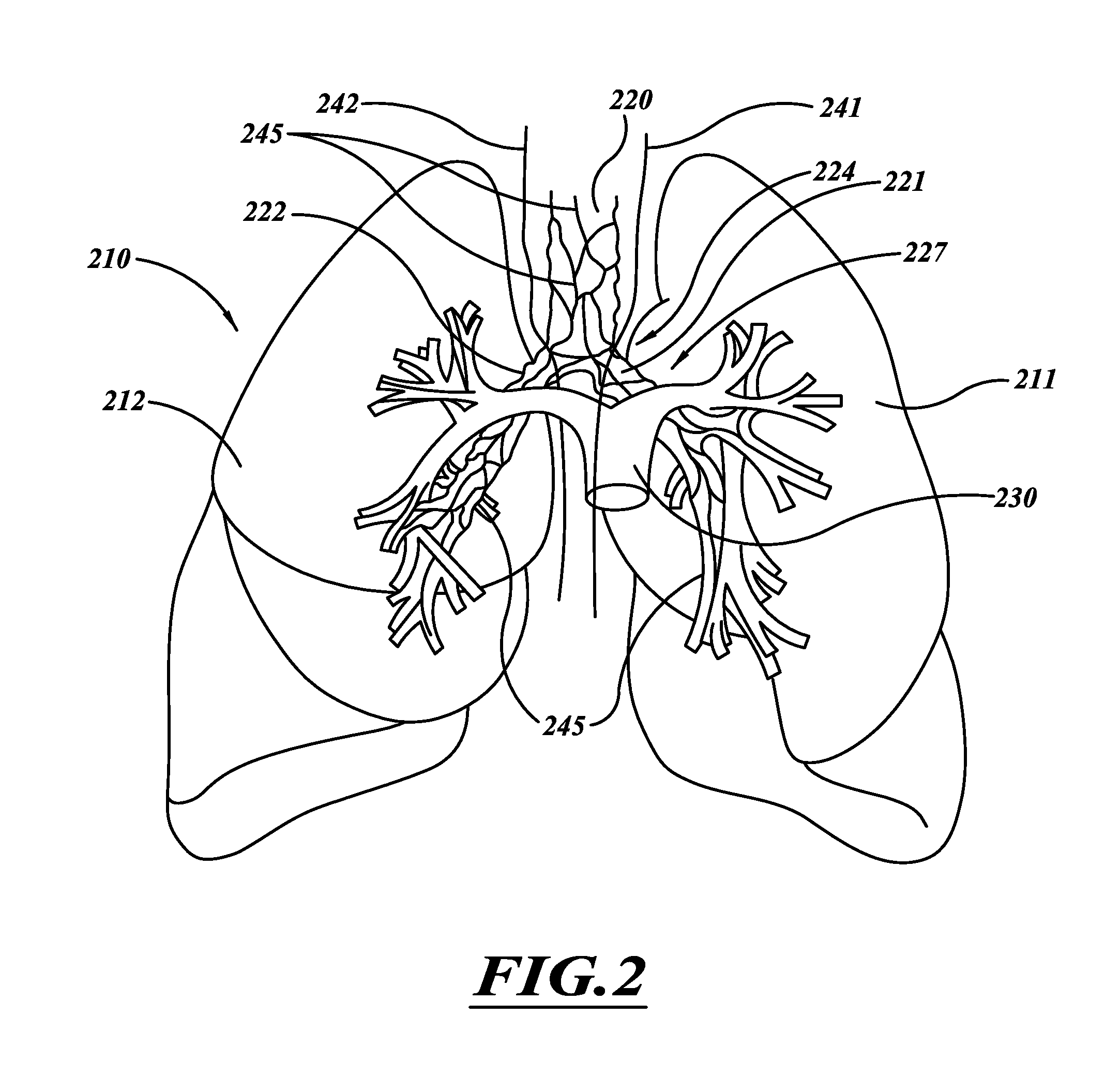Methods and systems for screening subjects
a technology for respiratory diseases and subjects, applied in medical science, diagnostics, medical preparations, etc., can solve problems such as the inability of subjects to receive therapeutic benefits, and achieve the effect of improving respiratory function and/or exercise capacity and low likelihood
- Summary
- Abstract
- Description
- Claims
- Application Information
AI Technical Summary
Benefits of technology
Problems solved by technology
Method used
Image
Examples
Embodiment Construction
[0031]Therapies for treating a respiratory system may effectively treat many diseases for certain individuals but may not be suitable for other individuals. It may be difficult to determine which individuals will respond to the therapies. There is often a wide range of efficacy, including efficacy levels for some subjects that may not justify the procedural risk associated with the therapy. A screening method can be used to determine the likelihood a subject will experience a desired therapeutic response prior to exposing the subject to risks inherent with the therapy and can be used to categorize the subjects into different groups (e.g., a group recommended for therapy, a group not recommend for therapy, a group for monitoring, etc.). Screening can be performed for different types of therapies, including lung denervation therapy, bronchial thermoplasty, lung resection, intrabronchial valve therapy, smooth muscle relaxation therapy, or the like, to predict therapy efficacy, to asses...
PUM
 Login to View More
Login to View More Abstract
Description
Claims
Application Information
 Login to View More
Login to View More - R&D
- Intellectual Property
- Life Sciences
- Materials
- Tech Scout
- Unparalleled Data Quality
- Higher Quality Content
- 60% Fewer Hallucinations
Browse by: Latest US Patents, China's latest patents, Technical Efficacy Thesaurus, Application Domain, Technology Topic, Popular Technical Reports.
© 2025 PatSnap. All rights reserved.Legal|Privacy policy|Modern Slavery Act Transparency Statement|Sitemap|About US| Contact US: help@patsnap.com



